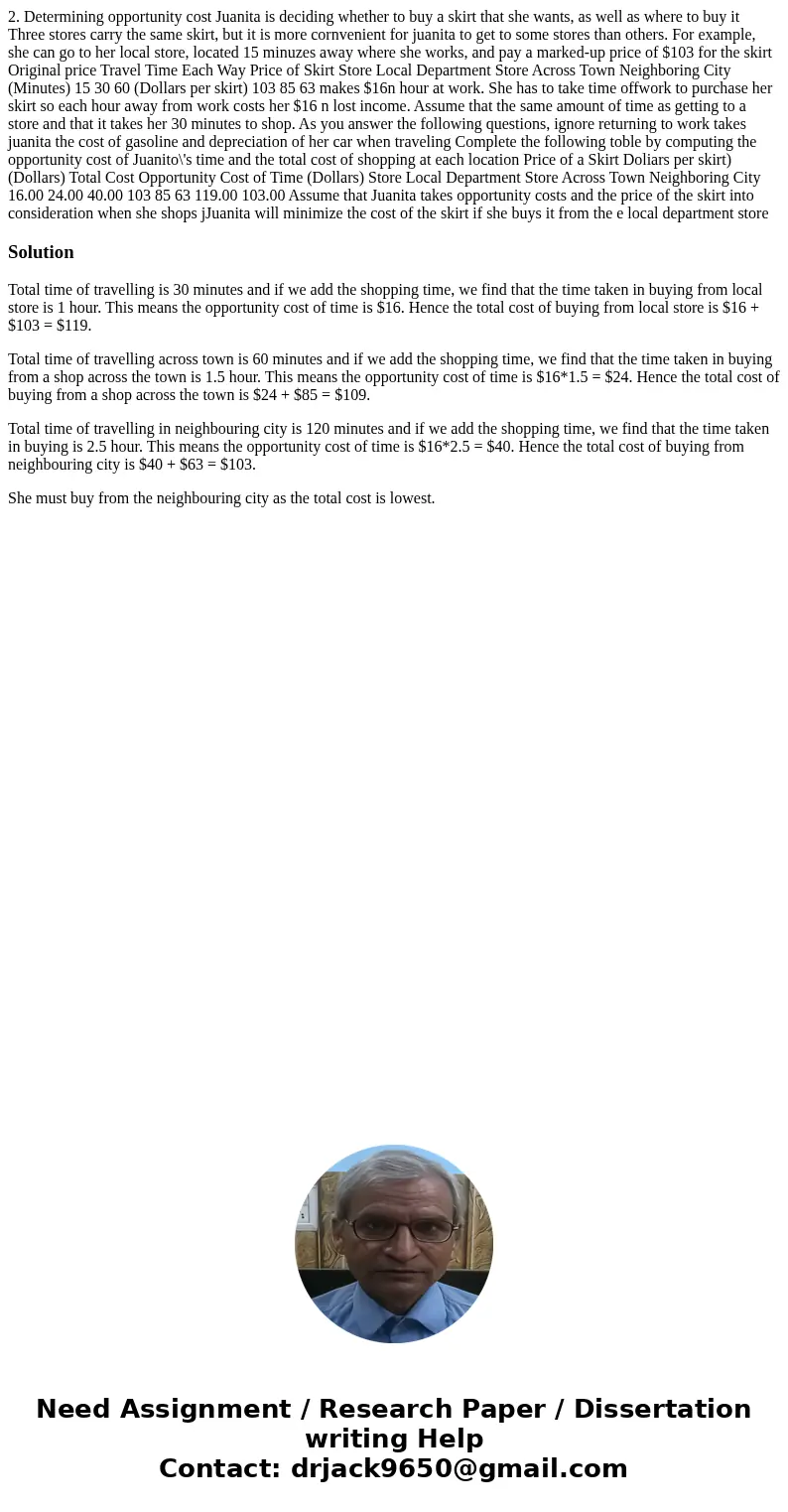2. Determining opportunity cost Juanita is deciding whether to buy a skirt that she wants, as well as where to buy it Three stores carry the same skirt, but it is more cornvenient for juanita to get to some stores than others. For example, she can go to her local store, located 15 minuzes away where she works, and pay a marked-up price of $103 for the skirt Original price Travel Time Each Way Price of Skirt Store Local Department Store Across Town Neighboring City (Minutes) 15 30 60 (Dollars per skirt) 103 85 63 makes $16n hour at work. She has to take time offwork to purchase her skirt so each hour away from work costs her $16 n lost income. Assume that the same amount of time as getting to a store and that it takes her 30 minutes to shop. As you answer the following questions, ignore returning to work takes juanita the cost of gasoline and depreciation of her car when traveling Complete the following toble by computing the opportunity cost of Juanito\'s time and the total cost of shopping at each location Price of a Skirt Doliars per skirt)(Dollars) Total Cost Opportunity Cost of Time (Dollars) Store Local Department Store Across Town Neighboring City 16.00 24.00 40.00 103 85 63 119.00 103.00 Assume that Juanita takes opportunity costs and the price of the skirt into consideration when she shops jJuanita will minimize the cost of the skirt if she buys it from the e local department store
Total time of travelling is 30 minutes and if we add the shopping time, we find that the time taken in buying from local store is 1 hour. This means the opportunity cost of time is $16. Hence the total cost of buying from local store is $16 + $103 = $119.
Total time of travelling across town is 60 minutes and if we add the shopping time, we find that the time taken in buying from a shop across the town is 1.5 hour. This means the opportunity cost of time is $16*1.5 = $24. Hence the total cost of buying from a shop across the town is $24 + $85 = $109.
Total time of travelling in neighbouring city is 120 minutes and if we add the shopping time, we find that the time taken in buying is 2.5 hour. This means the opportunity cost of time is $16*2.5 = $40. Hence the total cost of buying from neighbouring city is $40 + $63 = $103.
She must buy from the neighbouring city as the total cost is lowest.

 Homework Sourse
Homework Sourse